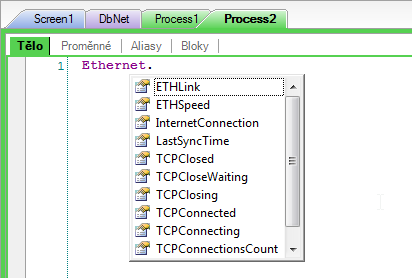Alarm detection (described in the previous part on news in DetStudio 2.0) is naturally related to subsequent alarm signalisation for the user – whether on a control system’s HMI or terminal, by means of a text message or other suitable means of communication.

To signalise alarms using text messages, we use the object “ModemSMS” that significantly facilitates work with SMS in EsiDet. The object “ModemSMS” allows us to send and receive text messages without any programming required! Again, everything is set up in a simple and well-arranged table with two tabs – incoming and outgoing text messages.

Thanks to sharing texts from the Operation log, text defined directly for alarms can be used. Other types of text messages can either have texts defined directly or in variables type String. That allows us to easily assign required text, addressee number and flag to trigger the text message sending to each text message. The rest is left in the table that sends the text message. If the first text message sending fails, the table automatically repeats the attempt twice. And when you need to send a text message to multiple telephone numbers at once? That’s no trouble for our table! Just put multiple numbers of addressees into the column that defines the number (you may do so directly or using a variable type String, or using the property type NumberX).
We can define incoming text messages just as easily (into the table rows). Notice the columns “Platný odesílatel” (Valid sender) and “Odpověď” (Answer) in the images. These columns allow us to easily filter telephone numbers from which the station is allowed to receive text messages and at the same time to define whether the station should send a reply using the flag in the column “Odpověď” (Answer).
Another innovation is certainly a wish come true for many of our customers. When programming a station with Ethernet interface, a global object called Ethernet is available that automatically informs us on the communication interface status and furthermore, it performs automatic synchronisation of the station time with the time server on the Internet.
Many of you would surely welcome information on whether Ethernet interface is connected into a LAN network, or whether it is possible to use Ethernet interface to communicate on the Internet.
Would you like to try out the new DetStudio version 2.0 right now? Contact our technical support.
Stay tuned for the next part of our series on innovations in DetStudio 2.0


